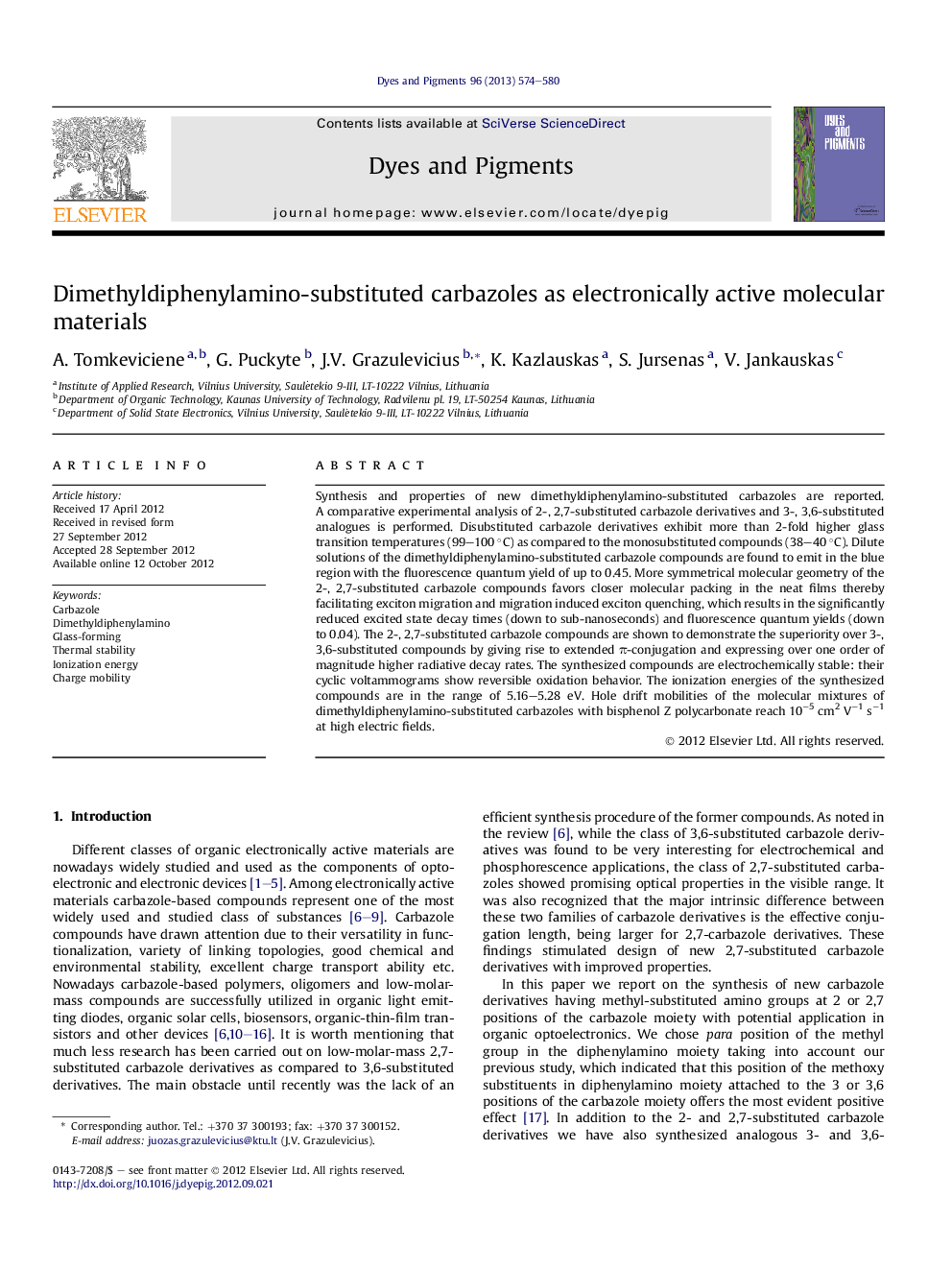| Article ID | Journal | Published Year | Pages | File Type |
|---|---|---|---|---|
| 176728 | Dyes and Pigments | 2013 | 7 Pages |
Synthesis and properties of new dimethyldiphenylamino-substituted carbazoles are reported. A comparative experimental analysis of 2-, 2,7-substituted carbazole derivatives and 3-, 3,6-substituted analogues is performed. Disubstituted carbazole derivatives exhibit more than 2-fold higher glass transition temperatures (99–100 °C) as compared to the monosubstituted compounds (38–40 °C). Dilute solutions of the dimethyldiphenylamino-substituted carbazole compounds are found to emit in the blue region with the fluorescence quantum yield of up to 0.45. More symmetrical molecular geometry of the 2-, 2,7-substituted carbazole compounds favors closer molecular packing in the neat films thereby facilitating exciton migration and migration induced exciton quenching, which results in the significantly reduced excited state decay times (down to sub-nanoseconds) and fluorescence quantum yields (down to 0.04). The 2-, 2,7-substituted carbazole compounds are shown to demonstrate the superiority over 3-, 3,6-substituted compounds by giving rise to extended π-conjugation and expressing over one order of magnitude higher radiative decay rates. The synthesized compounds are electrochemically stable: their cyclic voltammograms show reversible oxidation behavior. The ionization energies of the synthesized compounds are in the range of 5.16–5.28 eV. Hole drift mobilities of the molecular mixtures of dimethyldiphenylamino-substituted carbazoles with bisphenol Z polycarbonate reach 10−5 cm2 V−1 s−1 at high electric fields.
Graphical abstractFigure optionsDownload full-size imageDownload as PowerPoint slideHighlights► Dimethyldiphenylamino-substituted carbazoles exhibit high thermal stabilities. ► They form glasses with glass transition temperatures ranging from 38 to 100 °C. ► Fluorescence quantum efficiencies of the dilute solutions ranging from 0.11 to 0.45. ► The ionization potentials of the solid samples are in the range of 5.16–5.28 eV. ► Hole mobilities of the molecular mixtures with inert polymer reach 10−5 cm2/V s.
